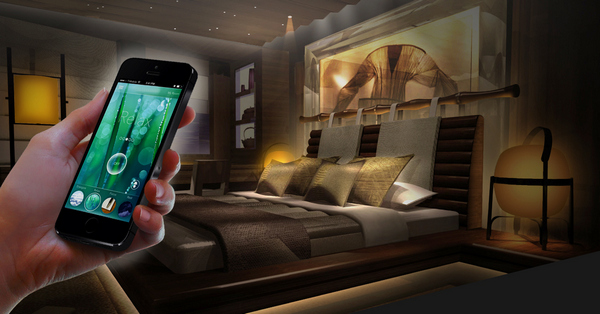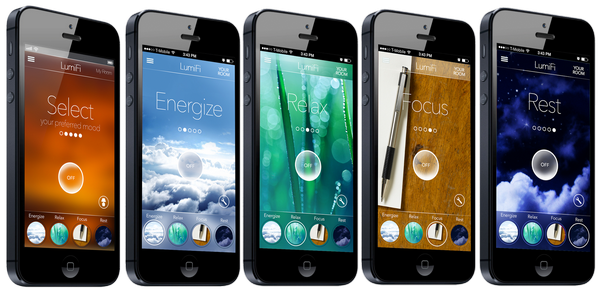In an exclusive interview with LEDinside, Beatrice Witzgall, founder and CEO of LumiFi shares her valuable insights and opportunities in the smart lighting industry. The award winning lighting designer, who has been in the lighting industry for over two decades, shared how she transformed experience accumulated from working with prestigious lighting design firms L’Observatoire and I3D to developing smart lighting products.
 |
|
Beatrice Witzgall, founder and CEO of LumiFi. (All photos courtesy of LumiFi) |
Q) How did you become involved in the lighting industry? How has your 20-year experience in architecture helped you develop smart lighting products, such as LumiFi?
Witzgall: I’ve always been interested in how technology influences the way we interact with space and how it influences people within. When I started to collaborate with the MIT Media Lab in 2000, we experimented with movable walls, sensors and responsive lighting. I quickly understood the power of ambient lighting to influence people or even transmit information. After that, I started to dive into lighting as an easy to manipulate media that has a big effect on space and people. In 2002, I was offered a position at the prestigious lighting design boutique firm L'Observatoire where I started a deep dive into the profession and realized the shortcomings and frustrations around traditional lighting controls. Because of my digital background I knew there had to be a better way to approach smart lighting.
Q) What are lighting designers or architects looking for when they are using connected lighting products in a lighting project? What should smart lighting or LED manufacturers be aware of?
Witzgall: I think lighting designers and architects have yet to embrace the full potential of connected lighting. Most market applications have been focused primarily on the home consumer as lighting designers look for more sophisticated products to specify. The range of available hardware is still limited and primarily focuses on replacement bulbs. With the existing hardware, only a select few commercial applications can be outfitted. Downlights, MR16 and proper striplights are not yet available in the IoT enabled and connected market to really do a full commercial install.
This year several key players within architectural lighting will start to launch their connected lighting product range, which will open up more possibilities and drive the industry education. We are still in the very early phases of commercial applications of connected lighting. We need more education and pilot and reference projects in the commercial market to drive awareness. There are only a few commercial applications that allow for sufficient available hardware such as hotel rooms, which use a lot of FF&E lamps. A whole lobby is still too complex as not many high quality, connected downlights or striplights are available yet.
 |
|
LumiFi smart LED lighting used in residential lighting settings. |
Q) LumiFi has been designed to meet interoperability demands, and previously was compatible with Philips Hue. What measures has LumiFi taken to solve incompatibility issue?
Witzgall: We are in communication with every hardware manufacturer before we start any integration process. This is essential to ensure reliable operability. We have integrated Philips, but are also working with a range of other manufacturers and protocols. Each manufacturer has its own set of complexities that need cooperation and collaboration on working the kinks out. There is a huge dependency between the hardware and the software provider. If that is not coordinated, the system can break or be disabled. This is something that has to be carefully managed for any successful deployment. Compatibility is our most time-consuming and technical challenge we are working to overcome. The drive to standards is good, but there is still a one-by-one integration and Q&A process to be done.
Q) What are your thoughts on major lighting players smart lighting developments? Such as Philips and Cisco’s partnership or GE’s recent hire of former IBM Watson executive John Gordon. How will these business strategies affect the smart lighting industry as a whole? Are you concerned that the smart lighting market will become dominated by larger players? Or do you think smaller start-ups with more innovative lighting technology will be able to fill the gap these large players might leave?
Witzgall: This is an interesting question. Of course the big players have more resources and longevity to go through the growing pains of this new technology. Since most of their expertise in hardware and smart lighting is actually a software play, there’s a shift in thinking and expertise, which opens the door for startups to enter the industry.
The key is who can figure out how to make IoT enabled lighting actually smart. This requires a unique set of skills as it's all about the "experience," which requires a combination between UX/UI design and incorporation of lighting know-how.
Neither hardware nor software builders have that. The technology will not succeed the moment you ask a consumer to program and configure his/her own lights. If that is not automated and pre-programmed it will remain an expert domain that overwhelms the consumer and prevents wider adoption. I do believe the lighting design domain needs to become an active part in providing their lighting application knowledge inside the software build.
 |
|
Different lighting settings that can be managed by LumiFi. |
Q) Most lighting manufacturers we spoke to recently, have noted smart lighting is a necessity for commercial and public lighting. Do you share the same view? When do you think smart lighting will become mainstream in residential lighting? Are consumers becoming more aware of smart lighting products? Have you seen an uptick in demands?
Witzgall: I completely agree that it will be an essential part. The benefits and potential are just too good. Also, the competitive pricing of a wireless lighting system over a wired legacy one are key factors. Wireless is a fraction of the cost and doesn't require heavy hardware, wiring or third party installers or programmers. I do strongly believe it will be several years until it will be mainstream. There are current issues that need to be resolved, such as which wireless protocol to use, how the different manufacturers can be integrated into one comprehensive and compatible system, and how we can help hardware manufacturers feel comfortable with software partners and resolve the dysfunctional business model around smart lighting.
On an application level we need a lot more hardware to be compatible with the connected lighting universe, regardless of if it’s Zigbee (ZHL and ZLL), BLE or JennetIP.
On the consumer side the user experience and what value lighting will bring is not completely refined enough to make it a good value proposition. The technology should become second nature for the consumer, but we will get there and we hope LumiFi will be a leader in bringing "smart" to connected lighting.
Q) Lastly, what is your outlook for smart lighting in 2016? What are some of the challenges in the market that the industry as a whole need to overcome?
Witzgall: The challenges will all be mostly technical and will evolve around compatibility and protocols. The discussion will be between Zigbee and BLE hardware launches and the pros and cons of each. BLE will solve some of the issues around Zigbee such as needing a gateway, but BLE has a different set of issues that need to be resolved. Software and hardware players also need to look at how they can work together and partner. There is a fine line if they can win market share over partnerships around different skill sets. For example, one might really understand BLE mesh networks, but not fully understand the user and lighting experience required for a successful deployment.
I think it will be an exciting year as several hardware form factors we have been waiting for are finally coming to market. Also, there is a lot more awareness and openness on the client and designers side with an increased eagerness to kick off pilots and deployments. LumiFi will focus on refining the user experience, adding more lighting knowhow and integration of more hardware into our software. In addition, we have several projects and clients lined up who are excited to work with us. The long wait is finally over. We’re ready to make this a reality.





 CN
TW
EN
CN
TW
EN








